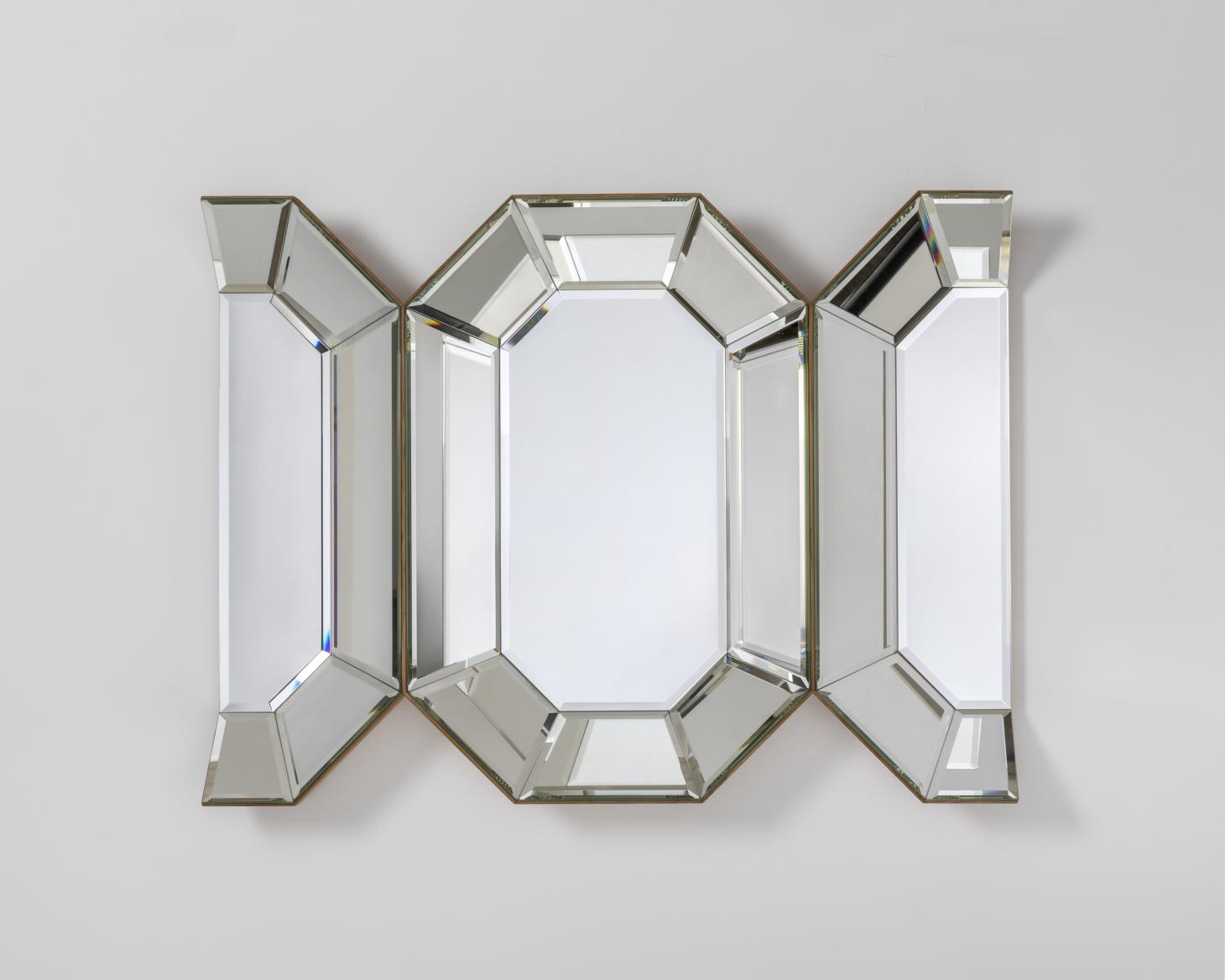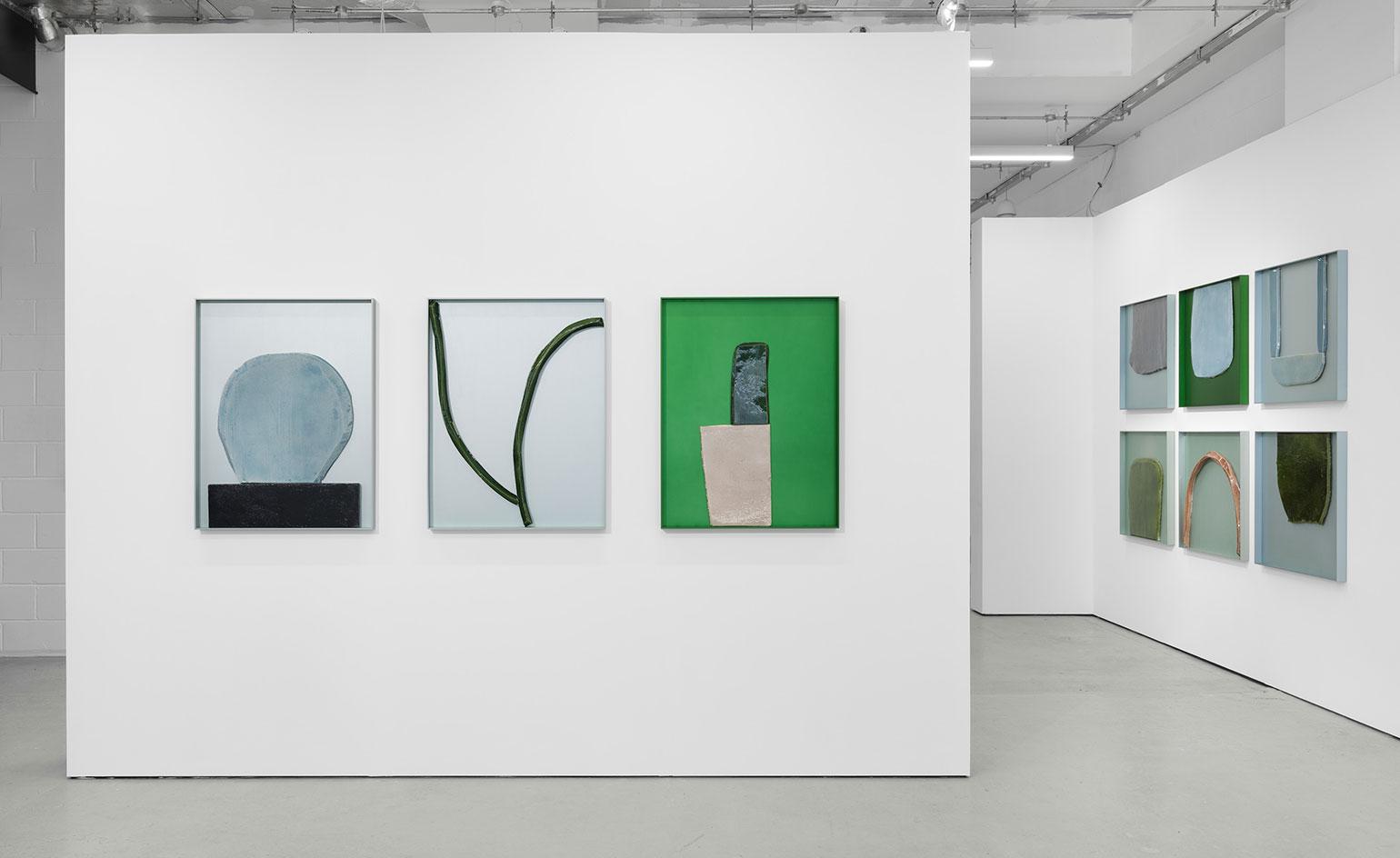Last chance to see: Front’s magic mirrors in Paris
Sofia Lagerkvist and Anna Lindgren of Swedish design studio Front present ‘Seven Stories About Mirrors’, a new solo exhibition at Paris’ Galerie Kreo (until 24 July 2021) looking at the history of mirrors in a contemporary context

Galerie Kreo unveils ‘Seven Stories About Mirrors’, a project by Sofia Lagerkvist and Anna Lindgren of Front featuring seven new mirrored objects exploring the history of mirrors, on view until 24 July 2021.
For the past three years, the Swedish designers have been asking themselves, ‘What’s in a mirror?’, and this collection is the result of wide research. ‘From the first stone mirror made 8,000 years ago, the history of mirrors has been laced with magic and poetry, luxury and vanity, myth and faith, medieval industrial espionage and modern psychology, craft and technological advances, culture and self-consciousness,’ say the designers. ‘Each of our seven stories about mirrors draws from a key step in the development of mirrors, and their unique craftsmanship.’
The history of mirrors: from stone to metal

The ‘Secret Mirror’, inspired by 15th-century Venetian techniques. The designers explain: ‘When workshops in Venice perfected the technique of making plate glass, craftspeople were moved to the island of Murano to keep the secret of their craft away from foreign spies. The guildsmen were sworn to uphold trade secrets on penalty of death.’ The secret eventually got out: Louis XIV persuaded some artisans to come to Paris and share their knowledge, and in the late 1600s, Gerolamo Barbini contributed to the realisation of the Hall of Mirrors in Versailles. Front worked directly with the Barbini family (still based in Murano) to create this piece
‘Through researching the history of the mirror, we wanted to understand how an object can transform its function, materiality, value and status over time,’ say the designers. The pair started by analysing reflection, mirror design and manufacturing through history, and created seven mirrored objects that respond to these moments in time. Working from a cultural, symbolic, as well as physical perspective, Lagerkvist and Lindgren dissected several centuries of design history and techniques to create their new pieces.
From water reflections to 13th-century blown glass, from 8,000-year-old obsidian to foundries making bronze mirrors, each piece, they explain ‘is the result of an astute typological and historical analysis of the mirror-object in order to investigate how the value, significance, cultural meaning, and technical aspect of a specific object is constantly evolving with time’.

The ‘Convex’ vase and mirror, inspired by ancient Roman techniques that resulted in a distorted, bright reflection
As well as traditional vertical mirrors, the collection includes the ‘Water Reflection Side Table’, a design evoking the reflecting water surface used since prehistoric times for ceremonies or to mirror and study the sky, and two ‘Mirror Vases’, inspired respectively by ancient Roman glass mirrors and by 13th-century manufacturing techniques involving unrolling a flat sheet of glass to create a mirror.
Other mirrors in the collection include a thick, black obsidian piece that resembles a wall-mounted, oversized piece of jewellery, a bronze mirror inspired by the Chinese mirrors dating back to 2000 BC, and ‘The Secret Mirror’, referencing 15th-century Venetian plate glass techniques

The ‘Bronze Mirror’ is inspired by ancient Chinese mirrors made since 2000 BC, originally featuring decorated reverse sides with mythological symbols or personal inscriptions. In ancient China, mirrors were a symbol of wealth and fastened with a ribbon to the owner‘s clothing, explain the designers, who were in turn inspired to create a hand-crafted rope to decorate this mirror
‘“Seven Stories About Mirrors” is about how one can study the evolution of humanity through the prism of the mirror, and how a single object fractures into multiple narratives,’ reads Galerie Kreo’s introduction to the project. ‘From industrial espionage in 16th-century Venice to Chinese metal mirrors, from early craftsmanship prowess to technological achievements, from the metamorphosis of the materiality of an object to the relationship of each one of us to our own image.
Wallpaper* Newsletter
Receive our daily digest of inspiration, escapism and design stories from around the world direct to your inbox.

Another example of the ‘Bronze Mirror’

Detail of the ‘Convex Mirror Vase’.

Detail of the ‘Cut Mirror Vase’

The ‘Obsidian Mirror’, referencing the earliest mirrored man-made object, created 8,000 years ago and found in Çatalhöyük, a neolithic settlement in Anatolia, Turkey. Front worked with archaeologists from Cambridge University, who led the excavations at Çatalhöyük, to replicate the mirror in obsidian using archaeological drawings

Installation view of ‘Seven Stories About Mirrors’ at Galerie Kreo, featuring ‘Bronze Mirrors’ on the wall and the ‘Water Reflection Side Table’

The ‘Reflection Vase’ is inspired by reflective objects other than mirrors, and the effect an object’s surroundings have on it. The vase features an optical illusion, as the reflections are embedded in the thickness of the glass

The ‘Water Reflection Side Table’, a piece evoking ‘the natural mirroring qualities produced by water's surface, in which mankind saw first saw its own reflection’
Information
‘Seven Stories About Mirrors’ is on view at Galerie Kreo, Paris, until 24 July 2021
galeriekreo.com
frontdesign.se
Rosa Bertoli was born in Udine, Italy, and now lives in London. Since 2014, she has been the Design Editor of Wallpaper*, where she oversees design content for the print and online editions, as well as special editorial projects. Through her role at Wallpaper*, she has written extensively about all areas of design. Rosa has been speaker and moderator for various design talks and conferences including London Craft Week, Maison & Objet, The Italian Cultural Institute (London), Clippings, Zaha Hadid Design, Kartell and Frieze Art Fair. Rosa has been on judging panels for the Chart Architecture Award, the Dutch Design Awards and the DesignGuild Marks. She has written for numerous English and Italian language publications, and worked as a content and communication consultant for fashion and design brands.
-
 Marylebone restaurant Nina turns up the volume on Italian dining
Marylebone restaurant Nina turns up the volume on Italian diningAt Nina, don’t expect a view of the Amalfi Coast. Do expect pasta, leopard print and industrial chic
By Sofia de la Cruz
-
 Tour the wonderful homes of ‘Casa Mexicana’, an ode to residential architecture in Mexico
Tour the wonderful homes of ‘Casa Mexicana’, an ode to residential architecture in Mexico‘Casa Mexicana’ is a new book celebrating the country’s residential architecture, highlighting its influence across the world
By Ellie Stathaki
-
 Jonathan Anderson is heading to Dior Men
Jonathan Anderson is heading to Dior MenAfter months of speculation, it has been confirmed this morning that Jonathan Anderson, who left Loewe earlier this year, is the successor to Kim Jones at Dior Men
By Jack Moss
-
 Step by step: Virgil Abloh, Jaime Hayon and more rethink the ladder at Galerie Kreo, Paris
Step by step: Virgil Abloh, Jaime Hayon and more rethink the ladder at Galerie Kreo, ParisA new exhibition at Galerie Kreo, ‘Step By Step’, invites more than 20 designers to rethink the ladder’s classic design
By Hannah Silver
-
 Lake Como Design Festival explores neo-nomadism
Lake Como Design Festival explores neo-nomadismStaged across historical venues in Como, the latest edition of the Lake Como Design festival (17 – 25 September 2022) includes exhibitions and talks centred around the theme of nomadism, and how it has shaped culture and creativity
By Maria Cristina Didero
-
 Studiopepe unearths a new aesthetic inspired by ancient sacred artefacts
Studiopepe unearths a new aesthetic inspired by ancient sacred artefactsPresented through an immersive installation at Fuorisalone 2022, Studiopepe has created a collection of furniture and objects with Galerie Philia, marking the studio’s debut into collectible design
By Rosa Bertoli
-
 Ronan Bouroullec experiments with bas-relief at Galerie Kreo
Ronan Bouroullec experiments with bas-relief at Galerie KreoA new exhibition of artworks by Ronan Bouroullec is now on view at London's Galerie Kreo (until 4 January 2022), exploring ceramic bas-relief in colourful compositions
By Rosa Bertoli
-
 Last chance to see: Philippe Malouin’s multifunctional steel furniture is made from found objects
Last chance to see: Philippe Malouin’s multifunctional steel furniture is made from found objects‘Steel Works’ marks Philippe Malouin’s solo debut in Athens, with an exhibition of multifunctional furniture and lighting designs at The Breeder gallery (until 31 December 2021)
By Rosa Bertoli
-
 New York design exhibitions: collectible design and emerging talent to discover
New York design exhibitions: collectible design and emerging talent to discoverA Wallpaper* guide to the best New York design exhibitions to visit now
By Pei-Ru Keh
-
 Design Miami/Basel 2021: the Wallpaper* highlights
Design Miami/Basel 2021: the Wallpaper* highlightsAs Design Miami returns to Basel (21 – 26 September 2021), we look at the fair’s highlights, including thematic displays, Curio presentations, and large-scale installations
By Rosa Bertoli
-
 Design Miami launches shop to support Covid-19 key workers
Design Miami launches shop to support Covid-19 key workersDesign Miami/ Shop will include collectible design from 52 international galleries, and the new charitable initiative in collaboration with international designers and artists
By Rosa Bertoli